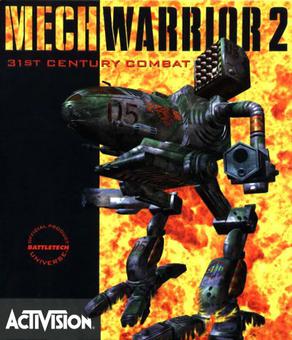 |
| "Overheating my mech?! Thermal shutdown failsafe?! What does that even mean?! Star Wars: Rogue Squadron lets me hold down the trigger for five minutes straight and absolutely nothing bad happened!" (Image source: Wikipedia) |
Being a game from 1995, its environments left something to be desired, but I loved seeing all the different planets the missions took place on. One of the advantages of a tabletop gaming universe is that there tends to be a lot of superfluous background information, presumably to better immerse the players in the game and help them come up with original but authentic game scenarios. I've only briefly dabbled in the game, having purchased the starter set recently, but I've found some of what I've seen rather interesting.
 |
| Disclaimer: despite the awesome articulated war machine on the cover, contents are mostly rulebooks and scoresheets. The closest you get to this is the miniatures. And you have to paint the miniatures. (Image source: Amazon) |
This sci-fi setting has no sentient aliens to speak of, so all storylines are human-centric. Consequently most of the planets have names with real-world origins, which I've always found more respectable than alphabet soup. Take a look at this doc for example. Note also that we don't get more than a page of background on any one planet, but at least (in most cases) we get some basic statistics and an image. Rather than all looking like Earth clones, the planets are quite diverse and visually appealing. (The artwork style looks similar to planetary art I've seen elsewhere; I wonder what software was used to create these pics.) The flavor text similarly paints a picture of colonization as a difficult endeavor, with settlers having to deal with a variety of hostile conditions. This is way more background than you'd get in most other media, with the possible exception of the Star Wars Legends continuity.
Also interesting to note is this map from the recent Mechwarrior Online multiplayer game: "Tourmaline Desert".
 |
| It's so beautiful, I got nothing snarky to say. (Image source: Mechwarrior Online) |
Whereas most of the other maps have environments with real-world analogs, this "Tourmaline Desert" definitely shows some cookie-worthy creativity. From the red sky and twin suns to the massive crystal formations to the 97-Celsius ambient temperature, this feels like a hostile world. Can't speak for its plausibility though. Until I inevitably Wikipedia'd it, I had no idea what tourmaline was. Here on Earth, though, it's classified as a semi-precious stone, so it seems unlikely you could have that much tourmaline in one place. Doesn't mean those crystal formations couldn't be made of something else though. I'd definitely like to see more like this in video games. (Hopefully we will once No Man's Sky comes out.)
On a similar note, the brand new map, "Hellebore Springs" is a simple but appealing concept. Purple plants!
 |
| Image source: YouTube |
Sure it's just a palette swap of trees and grass, but it's clear they're making an effort. Seems like you're more likely to see this kind of creativity in video games. I suspect that's because one way or another you're building everything from the ground up; in movies and live-action TV it's easier to use real-world locations for sets, and in books it's easier to not describe the planet at all (this happens too often).
No comments:
Post a Comment